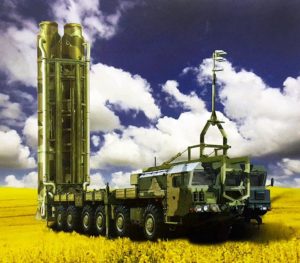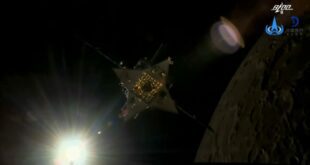
By Sonay Sarac
Recently, Russia announced that it will conduct a test of its Nudol ASAT system on 15 April 2020. In fact, such a test was subsequently carried out. The ground-based ballistic missile took off from its test site in Plesetsk, in north-western Russia. What is known about this test so far, and what might be Russian intentions behind it?
The Nudol ASAT system: Designed for Targets in Low Earth Orbit
Very little is known about the Nudol anti-satellite system, and this has led to much speculation. There are different opinions about the maximum altitude the ballistic missile can reach. However, the system is capable of intercepting targets in low-Earth orbit (LEO). Even though this missile launch took place at the test site in Plesetsk, flexible anti-satellite operations are possible by using a mobile missile launch pad – a transporter erector launcher (TEL). According to the Secure World Foundation, seven confirmed tests of the Nudol have been conducted since 2014, four of which may have been successful. Two others are still unconfirmed. The recent use of the Nudol system is thus the eighth confirmed test. It is not clear whether Russia had a target in mind with this test although at the time of launch, an old satellite with the designation Cosmos 1356 was in the correct position. However, there has been no official comment on this. No space debris was produced during the test, which indicates that the test was non-destructive. It is possible that a non-destructive test was intended, as the production of space debris could have meant a loss of international reputation for Russia. This assumption is justified in so far as space debris is increasingly endangering international security and is, therefore, entering the consciousness of many states. Nevertheless, this test was certainly also aimed at expressing Russia’s determination and military strength.
The U.S. Reaction: A Russian Dual-Track Policy
U.S. Space Command (USSPACECOM) stated that it “is aware and tracking Russia’s direct-ascent anti-satellite (DA-ASAT) missile test April 15.” According to General John W. ‘Jay’ Raymond, USSPACECOM commander and U.S. Space Force Chief of Space Operations, this ASAT test provides yet another example that “the threats to U.S. and allied space systems are real, serious and growing.” He further indicates that the “United States is ready and committed to deterring aggression and defending the Nation, [its] allies and U.S. interests from hostile acts in space.” Also, Russia’s dual-track policy has been criticised: “This test is further proof of Russia’s hypocritical advocacy of outer space arms control proposals designed to restrict the capabilities of the United States while clearly having no intention of halting their counterspace weapons programs.”
Possible Intentions Behind this Test
This dual-track policy is interesting because it raises the question about why Russia is committed to binding space arms control but acts in the opposite way. The Chinese anti-satellite test of 2007 serves as a useful comparison since China pursues a similar policy in space. Thus, it could be an overriding purpose to use such military means to persuade the USA to implement arms control in space. This was already the core assumption of Chinese analysts after the 2007 test.
It is well known that the United States, as the driving force, has strictly rejected all draft resolutions on arms control in space on the part of Russia and China for years. From the US point of view, these resolutions are essentially aimed at restricting the US in its capabilities – a perceived diplomatic ploy. In fact, these drafts make it clear that ground-based ballistic missiles, such as the Nudol system, are not space weapons by Russian definition – a problem for the US. Another assumption in this context is that China and Russia recognise the potential for the failure of arms control in space and are pursuing a strategy of safeguarding through research, development, and testing.
However, space policy developments in the United States are also currently giving rise to such measures. For example, First Deputy Secretary of Defence General Valery Gerasimov recently warned that the Trump administration’s space policy “may lead to an escalation of the military-political situation and emergence of new threats, to which Russia will have to respond with reciprocal and asymmetrical measures” in space.
The testing of the Nudol-ASAT system once again shows that the space regime is subject to global and regional power dynamics. It is certain that tests will continue to take place in this form in the future since they are a military part of these geopolitical dynamics. Against this background, it is interesting to ask how far military actions might go in the future and whether they will have a positive or negative impact on the development of international norms?
Sonay Sarac earned a Peace and Conflict Research M.A. at the Goethe-University in Frankfurt, Germany, with the focus on Space Security and Space Policy, and is a leading German expert on space security issues.





